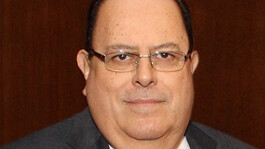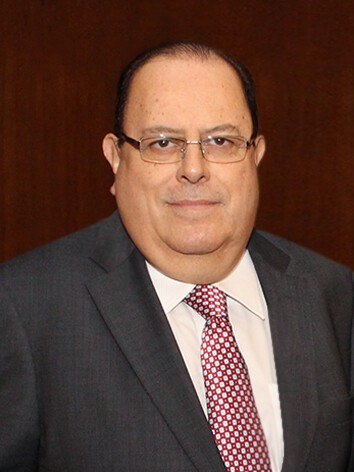Economic Fightback
We sit down with Julio Velarde, President of the Central Reserve Bank of Peru, to find out how Peru is bouncing back from the slowdown…

Peru’s rate of economic growth has slowed over the last few years; why is this?

Julio Velarde: Emerging market economies are slowing down in response to lower commodity prices, a deceleration in the Chinese economy, and heightened volatility in financial markets caused by an impending increase in FED interest rates. In Peru, two other factors had a negative impact on growth: temporary climate fluctuations affected agriculture and fisheries; and the mining industry resorted to exploiting lower-grade mineral ores (as a result, primary GDP decreased by 2.1% in 2014, its largest contraction since 1992). Moreover, a reduction in public expenditure, associated mainly with difficulties in the implementation of investment programs by regional and local governments, contributed to reducing Peru’s growth to 2.4% in 2014.
Growth is forecasted at 3.0%-3.6% in 2015, driven by a rebound in mining, agriculture, and fisheries (year-on-year growth in the first half of 2015 was 7.2%). Higher growth will depend mainly on a recovery in private and public investment, stronger business confidence, and the response to monetary stimulus. Over the next two years we expect growth rate to be 4.8% on average, led by higher export growth linked to the development of new mining projects such as Las Bambas, Constancia, and Toromocho. The latter are expected to double the production of cooper by the end of 2017.
What steps is the BCR taking to counteract the slowdown?
JV: The BCRP has taken measures to counteract the slowdown in the economy and its impact on inflation. Since October 2013, the BCRP has cut the reference rate by 1% (once in 2013, twice in 2014, and the last time in January 2015, 25 basis points each time). Moreover, the BCRP has reduced reserve requirements in domestic currency, in an effort to preserve the monetary policy transmission mechanism through the financial system.
The BCRP has also taken steps to promote credit de-dollarization at a faster pace to further reduce financial vulnerabilities. In December 2014, the BCRP announced additional reserve requirements in foreign currency for banks not achieving reductions in the stock of dollar loans of 5% and 10% by June and December, respectively. As of July 2015, all institutions had reached the targeted levels. As a result, dollarization ratios dropped from 38% in December 2014 to 33% in July 2015, which significantly limited the potential balance sheet effects associated with a sudden depreciation of the domestic currency.
Most analysts are bearish on mining commodity prices because of the economic slowdown in China; how would a continued low-price environment for commodities affect Peru’s future economic growth?
JV: Commodity prices have been affecting Peru’s terms of trade negatively since 2012. If this downward trend continues, lower profitability in the mining sector will lead to a reduction in investment in that sector. However, a USD 13-billion infrastructure boost, associated with the recently announced mining projects, is expected to offset the decline in investment in that industry over the coming years. The envisaged projects include the second line of the Lima underground train, as well as a gas pipeline and a new electric network in southern Peru.
"Commodity prices have been affecting Peru’s terms of trade negatively since 2012…"
In addition, cash costs in Peru’s mining industry, which are among the lowest in the globe, provide margin for sustaining growth and investment in this sector over the foreseeable future. Moreover, the BCRP expects mining companies to make up for lower revenues by increasing output. Government efforts to enhance the business climate will be key for reinforcing investor confidence.
To what extent has Peru managed to diversify its economy away from mining and how far do you see this trend of diversification continuing?
JV: Peru has experienced an important push towards diversification of productive and export sectors away from mining. Non-traditional exports have been increasing in the last 10 years; and Peru now boasts 638 new products in its export basket. Furthermore, Peru’s trade partners increased from 173 in 2004 to 184 in 2014; and the number of export companies grew by 2,799 over the same period. We expect this trend to continue, especially in an environment where resources allocated to traditional export industries, such as mining, become less profitable.
What will be the main drivers of the Peruvian economy over the next decade?
JV: The BCRP expects higher growth over the next two years, as new mining projects, which are envisaged to double copper production by 2017 (currently copper exports account for one-fourth of total exports), initiate operations. Additional growth support will be provided by new irrigation projects, which will expand agricultural lands for export production by more than 150 thousand hectares, and by infrastructure development through PPPs (expected to reach over $13 billion).
Furthermore, the government has recently announced a set of policies aimed at reducing labor costs and expediting environmental clearances. The BCRP expects these policies to have a positive effect on business confidence in the short run and on potential output in the medium run.
Some blame political problems for the Peruvian slowdown; how much of Peru’s economic slowdown was ‘self-inflicted’?
JV: Some political problems have had an impact on economic activity. First, social unrest associated with mining projects has delayed investment in the mining industry and affected business confidence. Second, corruption cases at the local government level have delayed public investment in several parts of the country. However, we believe that the main drivers of Peru’s slowdown have been a decline in terms of trade and transitory supply-side factors (such as climate disturbances and lower mineral ore grades).
Does the BCR see these problems being resolved?
JV: We consider that, once the newly elected regional authorities settle down in their new positions, public investment at the local level, which has decreased significantly over the past two years, will speed up and contribute to boosting the economy. Moreover, we believe that it is very important to promote stronger relationships between mining companies and the local communities in the vicinity of mining projects. This will boost investment in the mining sector and secure a recovery in business confidence.
Will the start of the presidential election season have an impact on economic growth in the short term?
JV: We do not think it will have an important impact on economic activity. None of the current leading candidates has called for radical changes in macroeconomic policy. Therefore, we expect the current environment of macroeconomic stability and fiscal responsibility to continue. This contributes to our outlook that the Peruvian economy will resume growth towards to its potential pace.